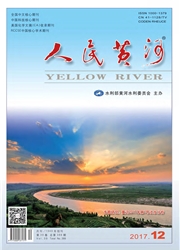

 中文摘要:
中文摘要:
计划于2017年发射的高分五号(GF-5)卫星是中国高分专项工程中一颗重要光谱卫星,可以用来动态监测饮用水水源地风险源地物。为分析预测GF-5卫星在水源地风险源地物监测中的潜力,在缺乏有效光谱数据的情况下,选择与GF-5全谱段成像仪光谱设置比较接近的Landsat8 OLI数据,并分别将30 m和15 m空间分辨率数据作为GF-5数据信息量的下限和上限进行试验分析。在遥感影像的解译能力方面,将Jeffries-Matusita(J-M)距离判定作为下限,以地物均值光谱曲线特征为依托对地物可区分性进行定量分析,将专家判读不同波段组合的地物图像判识作为上限对地物可区分性进行定性分析。研究选择天津市于桥水库为试验区,构建合适的风险源地物识别类别体系,开展数据处理和试验分析,定量分析与定性分析结果表明,GF-5全谱段成像仪的20 m反射光谱数据不仅可以实现对林地、人工水域、水产养殖区和农田的判识,而且在未来很可能实现对农业大棚、采矿用地、住宅小区、村落和工业用地等典型风险源地物的判识。
 英文摘要:
英文摘要:
GF-5 being launched in 2017 is one of China's new generation high spectral resolution remote sensing satellites. It can be used todynamically monitor the risk source in drinking water source. In order to analyze the potential of the GF-5's 20 m reflectance spectral data inmonitoring the risk source in drinking water sources in the absence of proper simulated GF-5 data,Landsat 8 OLI data sharing a similar spec-tral and spatial setup with GF-5 data was used as substitution. A novel strategy with two types of lower and upper bounds was developed in theanalysis. 15 m and Landsat 8 30 m OLI data worked as upper and lower bounds in terms of information contained in the data. In terms of theability of interpretation method,a typical quantitative analysis method namely Jeffries-Matusita distance was chosen as a lower bound,whileexpert interpretation of different combinations of bands always being considered as a qualitative analysis was chosen as an upper bound. Weselected Yuqiao Reservoir in Tianjin and its surrounding as the test area to conduct our experimental analysis. Based on above analysis,GF-5's 20 m reflectance spectral data can not only realize the identification of forest land,artificial water,aquaculture and farmland,but also inthe future are likely to realize the identification of typical risk source of agricultural greenhouse,mining land,residential areas,villages andindustrial land.
 同期刊论文项目
同期刊论文项目
 同项目期刊论文
同项目期刊论文
 期刊信息
期刊信息
